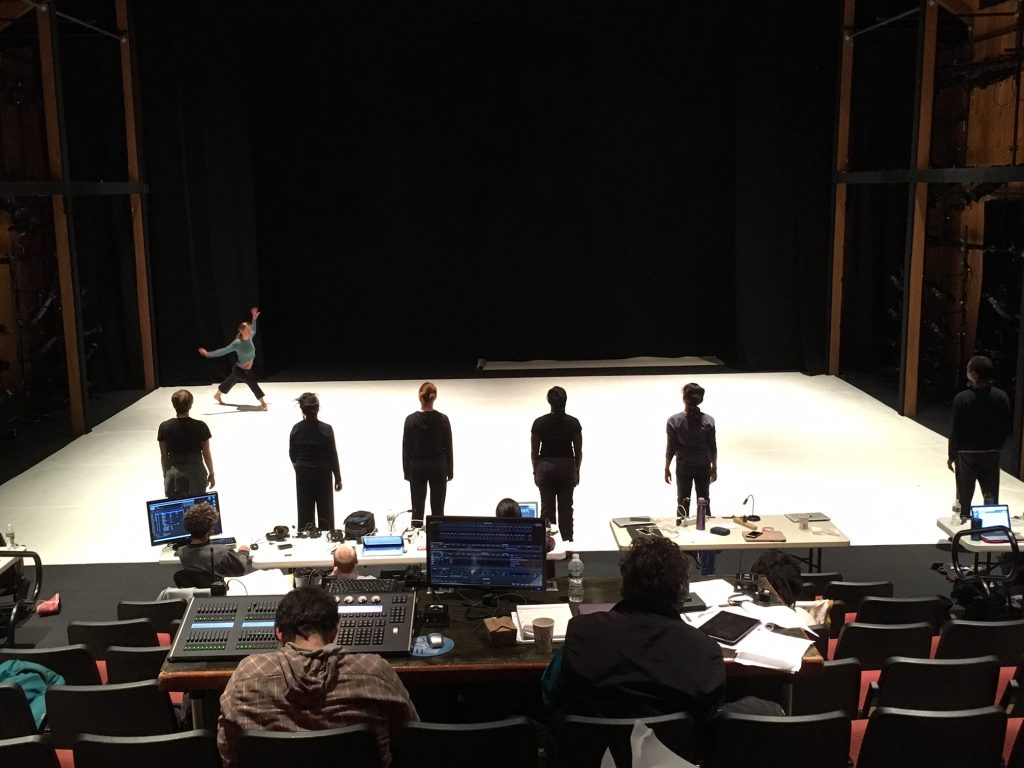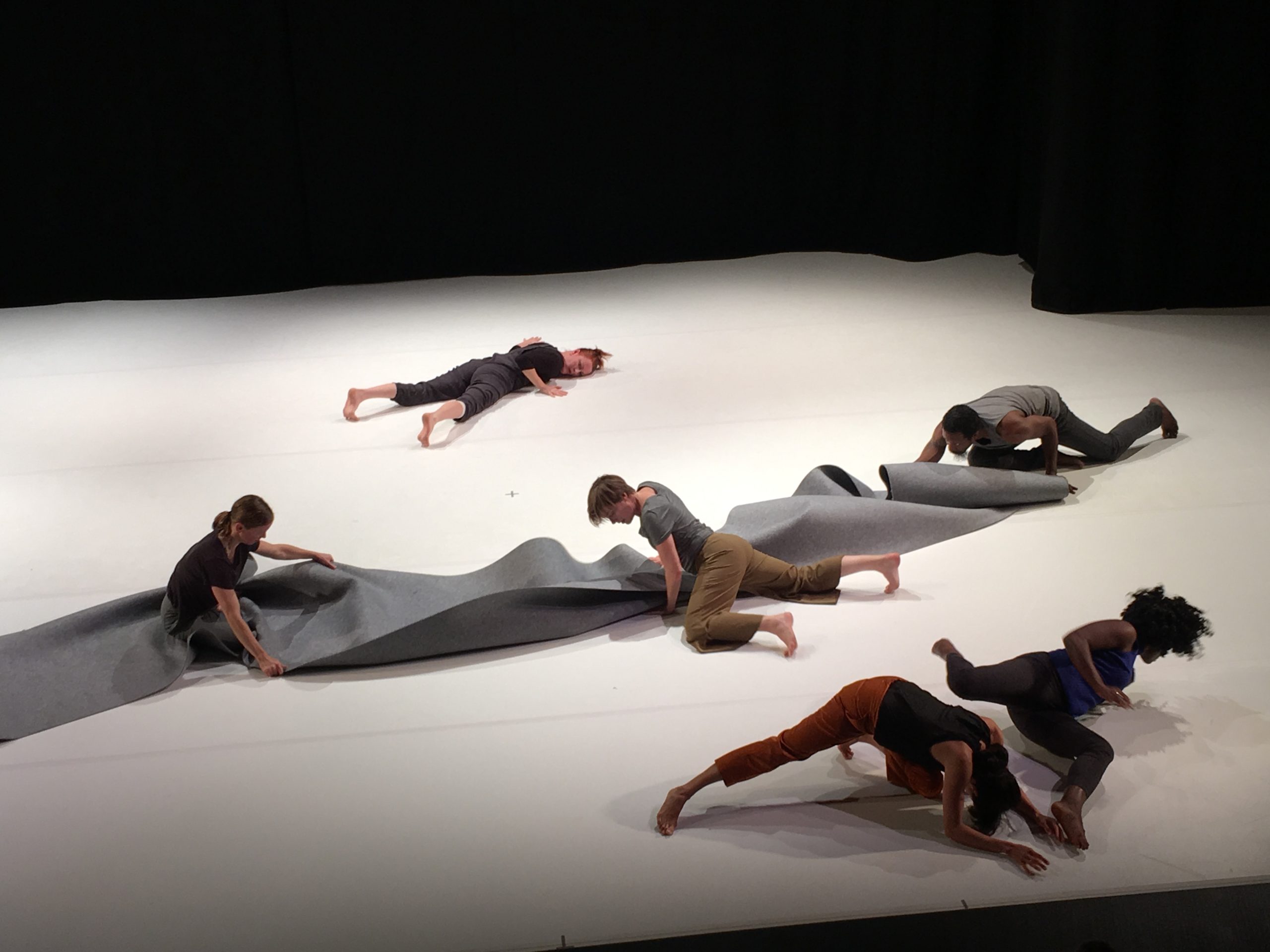July 2017 finds us a year into the various contexts and groupings that have been forming since we were last in Columbus, in June 2016. Our rehearsals and showings have taken place in studios of different sizes and intimacies. When we work in longer, narrower spaces there’s a serendipitous choreography that happens between ensembles, wherever they have anchored themselves. Finding room to move about might mean sidestepping an activity that’s ruminating at a cooler level, creating an upstage/downstage effect. The rectangle with a viewpoint suggests a proscenium unless you work hard to dislodge that habit. Decisions have been made about venues and dates. That leaves the job of pulling the viewer into a corner—a corner that is actually the center of the action, corner being a perception rather than an architectural detail—up to the choreography.

I’ve met with Stan Pressner (production and lighting designer) and Liz Prince (costume designer) and together the three of us have floated prompts of flexible space, tour-ability, wash-ability and budget. High on the list from the start has been the fact that the overall project of The Making Room is about making dances, not so much the performance of the product, however inevitable that may be. How do we keep that intention part of the package? How might we deliver process? In A Rhythm is a scored improvisation, built around potential in the live moment. Do we explain it, do we share our own unfolding view of a work-in-process, does it change every night? Do we perform what we’ve made or are we making as we perform?
We work onstage at the Wexner Center for the Arts where the piece will premiere in November 2017. The Wexner has made the Black Box space available to us along with staffing and equipment so we can design the work according to how it will first be seen. Working at scale six months before the premiere means we can learn how to receive the piece, how to meet it as we’re making it. Hard, though, to shift between big picture, sectional detail, and risk. It takes several days to get to the Dancers’ Run, so-called because they strongly felt the need to shape the sequential organization—the syntax of the piece—from the inside. My version pulled to the more orderly side of things. It was less in keeping to the responsive play that was our studio practice, what we all wanted for the work. Their intuitions were right. The Dancers’ Run becomes the framework for the piece and will move us forward to the last residency, a week at Jacob’s Pillow in November, three weeks before the premiere.
We also come up with a title: In A Rhythm. It seems to work on many levels, referencing the back-and-forth swings in attention, timing, and performance, shifts between dancing, the sound score that supports it, and hopefully the conversation it invites.

The week in November at Jacob’s Pillow, produced by LUMBERYARD, will be our last rehearsal residency before the premiere. The company stays in the Pillow’s farmhouse and cabins. Lila cooks breakfast most mornings and we spend all day in the Duke Theater. Both dramaturg Talvin Wilks and video artist Lily Skove are with us, along with LUMBERYARD’s resident dramaturg Melanie George, dropping in on different corners of process in the open space. In an interesting way our daily schedule reflects our overall rehearsal strategy over the past 18 months. We have gathered in various groupings (often dependent on availability) and have found the particular departure point that resonates in each gathered group. In this manner what we’ve made is a work that is organized and hopefully received as a way of working. Our beginning premise was centered around the syntax and form involved in how we shape time, juxtapose, or move from one action to the next. We’re pretty much there. In so doing we have also found a method that is new to all of us, defined by all of us, together. The cut-to-the-chase tone of the January rehearsals at Smith is reflected in how we work. I recognize the intellect and physical curiosity that motivates each collaborator. We recognize, between us, the potential in the mix of our individual strengths and appetites. We can deal. This will work.